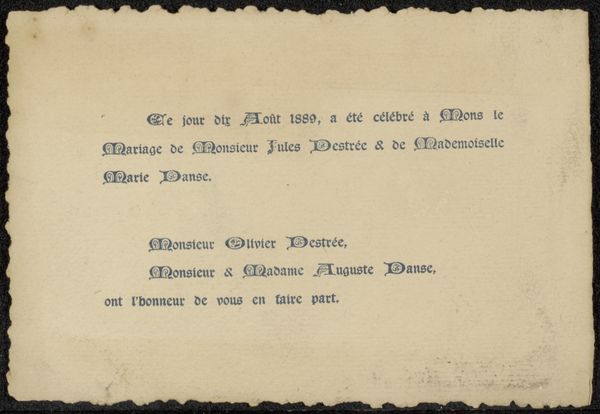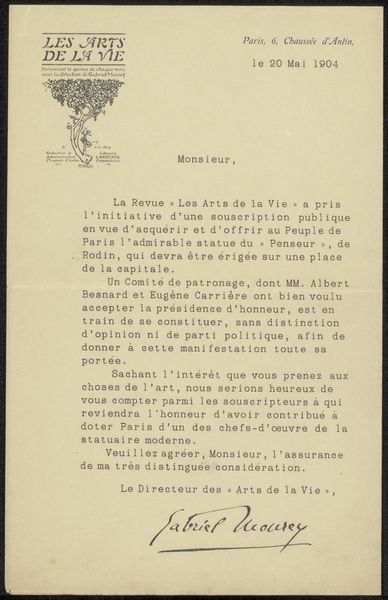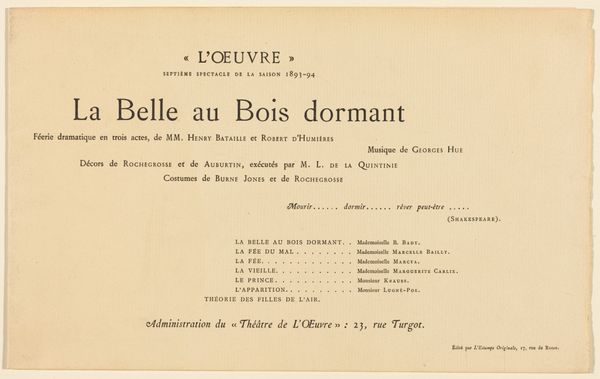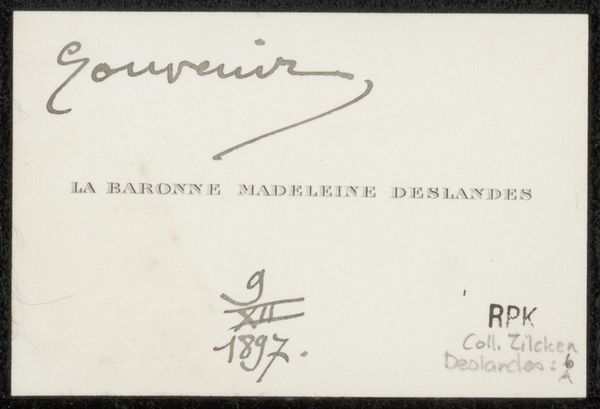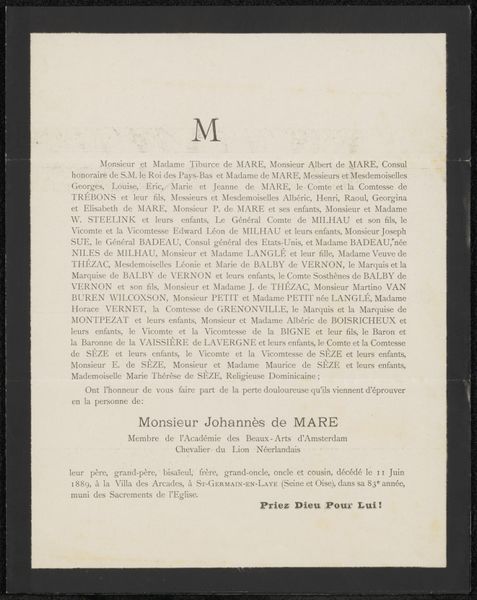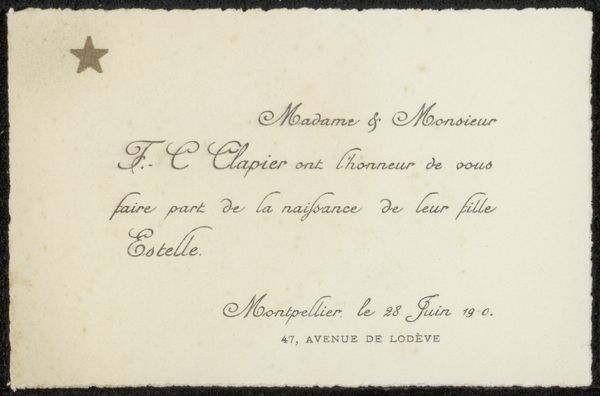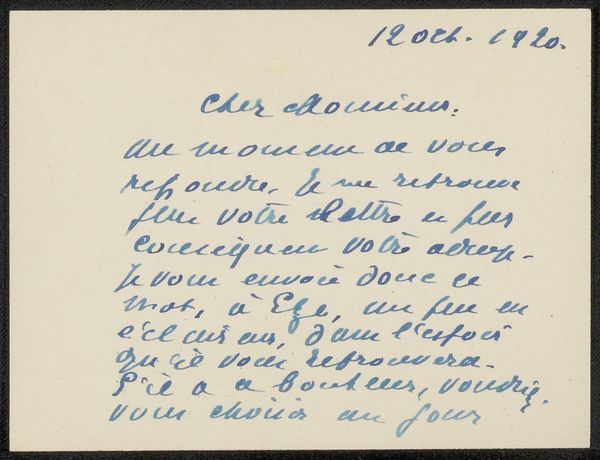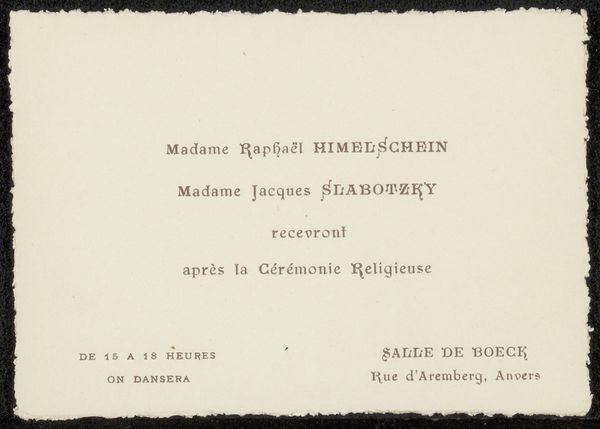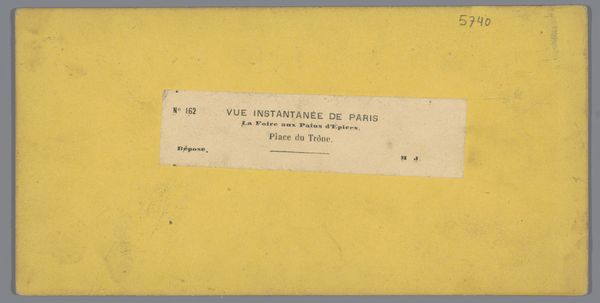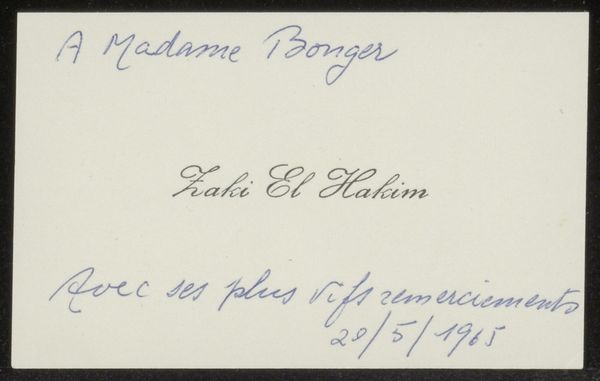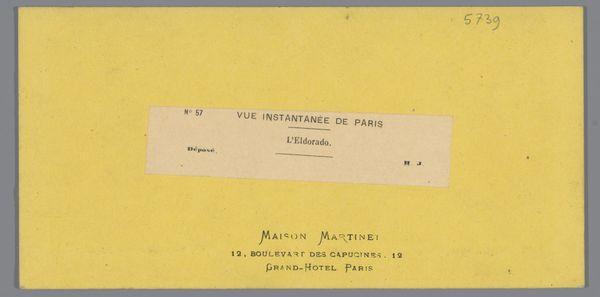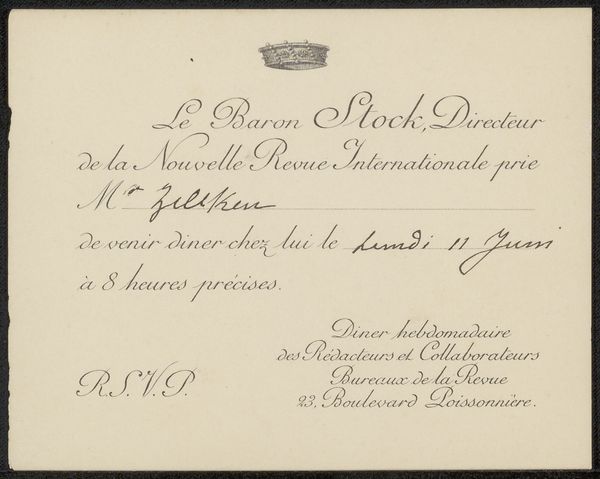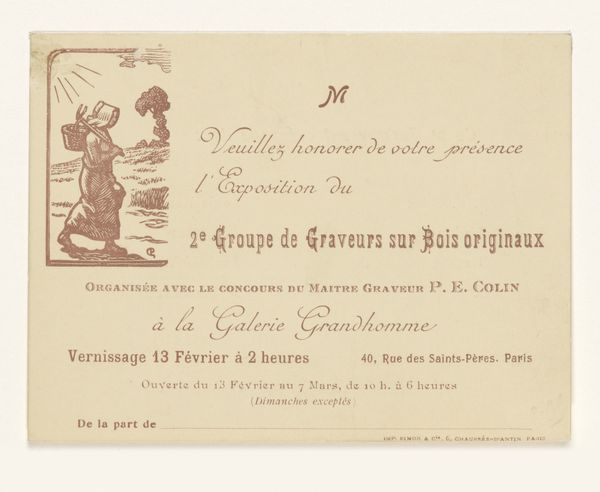
mixed-media, print, paper, typography
#
portrait
#
mixed-media
# print
#
paper
#
typography
Copyright: Rijks Museum: Open Domain
Curator: Looking at this intimate mixed-media print on paper, one feels a palpable sense of quiet grief. Editor: Indeed. This is "Overlijdensbericht aan Philip Zilcken," a death announcement dating from after 1913. The text is entirely in French and announces the passing of Madame Félix Buhot, née Henrietta Johnston, to Monsieur Jean Buhot. It communicates this painful loss to acquaintances. I can delve into the history of death announcements if you would like. Curator: It’s powerful how a seemingly simple piece of typography can evoke so much. But looking beyond its immediate melancholic effect, the class is quite evident. There's a formality implied in announcing deaths this way, signaling bourgeois societal customs that dictate not just mourning but public demonstrations of mourning within tightly regulated societal spaces. I think a deep study into such materials can unlock key understandings of the era's performative sadness and its relationship to status. Editor: Precisely. These announcements were not just personal expressions; they were carefully constructed performances adhering to specific social codes and expectations, often linked to religious practices. Consider, for example, how the text explicitly mentions that religious services were celebrated at the Saint-Georges Anglican Church before the burial. The family is highlighting their position within Parisian society by referencing particular churches. Furthermore, the printer's information – G. Trouvain, a Parisian firm – underscores that the family circulated within a very particular local milieu. Curator: Absolutely, and I can’t help but see a potential reflection on evolving ideas of gender and lineage. The announcement places considerable importance on Henrietta Johnston’s maiden name, underscoring the matrilineal dimension of identity – it brings to mind debates in feminist studies regarding how women's identities are perceived across historical landscapes. Did Johnston retain ties to specific networks connected through her maiden name? This sort of ephemera is so revealing of how familial relations were negotiated publicly. Editor: I agree entirely. And if we also consider that the intended recipient was a man—Monsieur Jean Buhot—this opens further avenues for interpretation related to inherited name, patriarchal lines, and public visibility for male familial figures in early 20th-century Parisian society. Curator: A small piece of paper holding entire social universes within its fibers! Editor: Yes, a modest artifact opening boundless doors for deeper understanding.
Comments
No comments
Be the first to comment and join the conversation on the ultimate creative platform.

